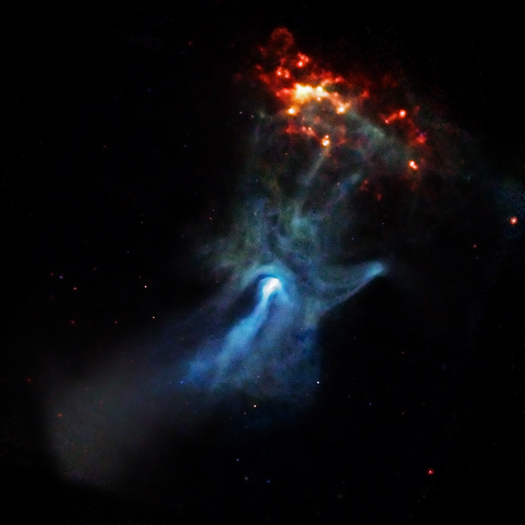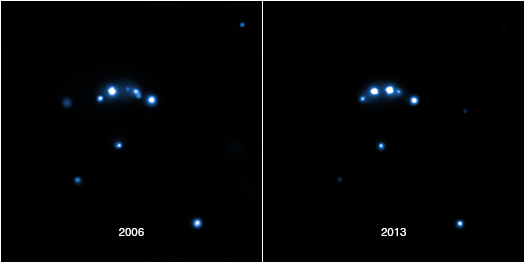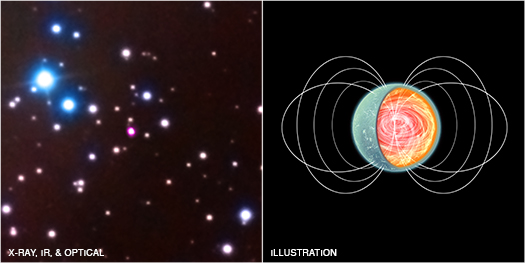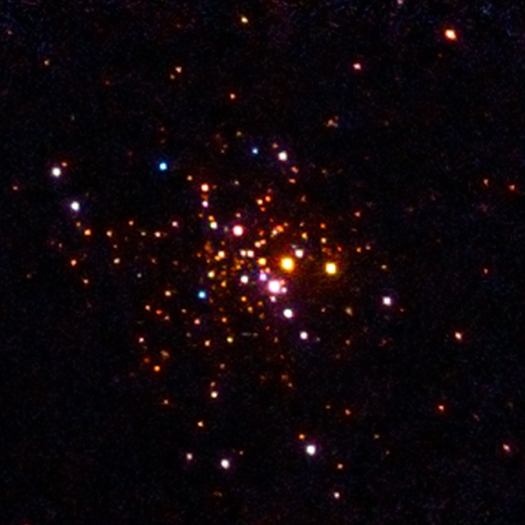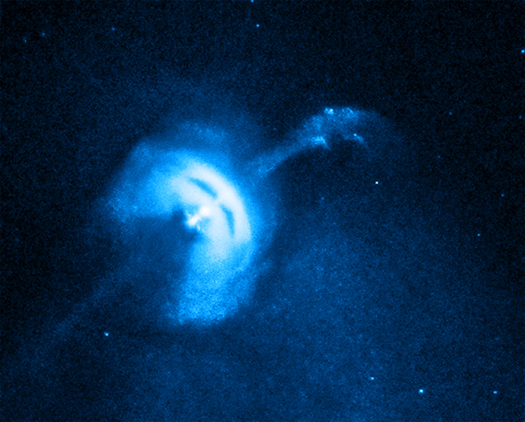Running at Breakneck Speed With Open Arms
Submitted by chandra on Sun, 2014-02-16 18:38
Lucia Pavan graduated with a master thesis in astronomy at the University of Padova (the same town from which Galileo discovered Jupiter's moons). Four years later she also got her PhD in Physics at the same university, working on "magnetars" -a particular kind of pulsars, with the highest magnetic fields. After the PhD, she obtained a postdoc position at the University of Geneva - Switzerland, working at the INTEGRAL Science Data Center (ISDC). In between, she moved to the US, working at University of Wisconsin-Madison for a few months. She currently lives in Geneva, working at the ISDC.
When I started to work on the sources discovered by the INTEGRAL satellite, I didn’t expect to find an object that was extraordinary not only for the properties of its emission, but also for its extension and shape in the sky. And yet this was the case when I came across IGR J11014-6103.
INTEGRAL is an ESA satellite in operation since 2002, sensitive mainly to X-ray and gamma-ray bands. The satellite has been accumulating data since the beginning of the mission, providing information on an always-growing number of X-ray emitters. It is thanks to this ability that new objects are continuously discovered. A large fraction of the sources that INTEGRAL has found still lacks any physical classification, a perfect area for new findings to be done.

